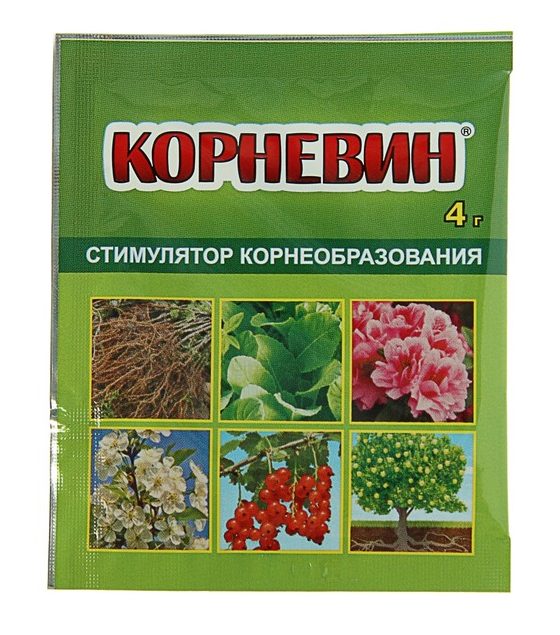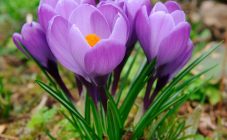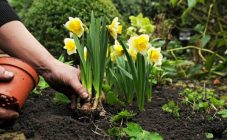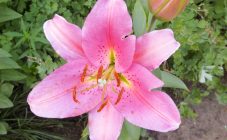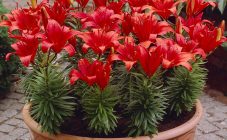Content:
Lily is a perennial plant that grows from a bulb. There are more than 110 varieties of it. The flower is widespread everywhere, except for areas of permafrost. Even in cold regions, some species grow, for example, Lily locust. There are also edible varieties in the lily family. For example, the bulbs of the tiger lily, which grows in central Russia, are quite suitable for food. They are eaten fresh, added to salads, fried with other vegetables, and used as a side dish for meat dishes.
You can only eat bulbs grown with your own hands. Purchased (for planting) can be treated with toxic chemicals.
Of course, the flower is primarily prized for its beauty. For this purpose, it has been grown for more than 10 centuries. Breeders tirelessly breed new hybrids. Lily is in great demand as a garden plant. In the design of flower beds, she is almost the main plant. A variety of shapes and colors allows you to satisfy the desires of the most capricious flower growers. Also, the lily is beautiful when cut. Many people like its very strong scent. But it is better not to put a bouquet with lilies in the bedroom. Its scent can cause headaches.
All About Lily Bulbs
Depending on the variety and age, the bulbs range from 12 cm in diameter to 22 cm. This does not apply to "babies": they are small, no more than 1 cm in diameter. Each year, the volume increases by 2 cm. After a couple of years, the first flowers (sometimes - after a year). There are few of them, they are not very large. The plant reaches full maturity by 5 years. Then the bulb is gaining maximum condition. A powerful plant with large buds grows from such material.
A ripe large onion is covered with "kids". After digging, they are easily separated from the mother. The main thing is to try to get the whole family out of the ground. Lilies should be kept indoors. If any amount remains in the soil, then it is:
- loss of future planting material;
- unintended germination of lilies during a successful wintering.
Although, if climatic conditions permit, "children" can be left for growing right on the site. You just need to better cover the planting bed.
Preserving lily bulbs before planting
So where to start and how to keep lily bulbs at home until spring? Lily bulbs are ready for digging in the fall, in the second and third ten days of October, when the first frosts pass. It will be correct to trim them first, leaving 5-8 cm of the cutting above the bulb.
Collection and processing of planting material
The process of collecting seed material must be approached responsibly. In order not to injure the onions, it is better to dig them out of the soil with a pitchfork. Next, all material should be rinsed and immediately inspected for damage. It is recommended to put healthy bulbs in an insecticide solution for 30-40 minutes (Karbofos, Fundazol, Fufanon and so on are suitable). The processed material is dried for about a week in a cool dark place (up to +15 degrees).
Storage bookmark
The most important moment comes - laying the seed for storage (after sprinkling it with a fungicide, such as Trichophlor, Bactofit). Preserving the bulbs is a very important matter.
How to store lilies before planting:
- Put in a paper bag, mixed with vermiculite.
- Arrange in a low cardboard box with ventilation holes. Pour vermiculite between the bulbs.
- Line the bottom of a cardboard or wooden box with river sand and spread the planting material on top. The advantage of this method is that, having covered the first layer of bulbs completely with sand, you can repeat the procedure. This will create two layers.
- Lay out the bottom of the plastic bag with a thick layer of peat (at least 15 cm, put onions on it, add another layer of peat and on it - again material, etc. A prerequisite is the presence of ventilation holes in the bag!
Storage conditions
The most dangerous enemy of planting material is high humidity. It often leads to rotting of the onions. Lack of ventilation also brings a lot of troubles - fungi develop. And fluctuations in temperature can lead to drying of the material or to premature germination. Therefore, it is worth choosing premises that meet the following requirements:
- Good ventilation.
- Humidity not more than 70% and not less than 40-50%.
- Air temperature from 0 to +4 degrees.
Even if all these rules are followed, it is worth regularly checking the condition of the bulbs (at least a couple of times during the winter). If rot appears, you need to scrape off the affected areas and treat the wound with brilliant green, sprinkle with crushed coal, cinnamon powder. If the material is dry and wrinkled, the bulbs themselves and the filler must be moistened immediately.
Restoring a dried onion
The flowering quality depends on the source material. If the bulbs remain healthy, this is one thing, and quite another - if they were damaged in the spring. If you do not take urgent measures, you can lose the plant or get frail, nondescript specimens.
Resuscitation methods
First, it should be freed from external scales. At this stage, live material can be found. It must be soaked in a 0.5% manganese solution or in a preparation that enhances root formation (Kornevin, Epin). After 10-12 hours, the bulb can be planted in a pot or in a garden plot (spring version).
It so happens that with an excessively high temperature in the room, the bulbs simply dry out. There is nothing fatal in this case. You just need to restore the loss of water. To do this, dried onions are wrapped in a cotton rag or gauze soaked in a 0.5% manganese solution. In a day or two, they recover and are ready to disembark.
If the bulb looks sluggish and soft to the touch, you will have to turn to growth stimulants. That is, put in a diluted preparation such as Epin, Kornevin, Heteroauxin. Instructions for use are usually written on the packaging. For example, for Epin (processing of tubers and flower bulbs), the proportion is 1 ml per 2 liters of water. And the bulbs are recommended to be left in solution for a day. After the time indicated there, the material is taken out and planted.
There is also a way to restore the onions that have slightly rotted: first, the damaged area is cleaned off to a living place, and then the wound is treated with pharmacy brilliant green.
If the spring is still far away, the processed material should be wrapped in wet moss, then paper and put in a plastic bag with ventilation holes. If there is no moss at hand, wet gauze will do. Only a day later, the bulb should be transferred to a layer of wet (but not wet!) Sand and dried in the sun after a few days. Then store in the refrigerator until disembarkation.
Sometimes the bulbs can freeze.If they are smeared under your hands, it makes no sense to restore them, but if you feel hard areas, you can try to clean off the frozen areas and send the material to the stimulant solution. After a day, they should be removed from the solution and stored, sprinkled with dry peat.
Of course, lilies are capricious flowers. But their beauty is worth taking with all the attention to their cultivation. If you remove the bulbs in time, save them correctly (since it is much more difficult to reanimate the bulbs of bulbous flowers), successfully plant them, then they will delight all summer.


